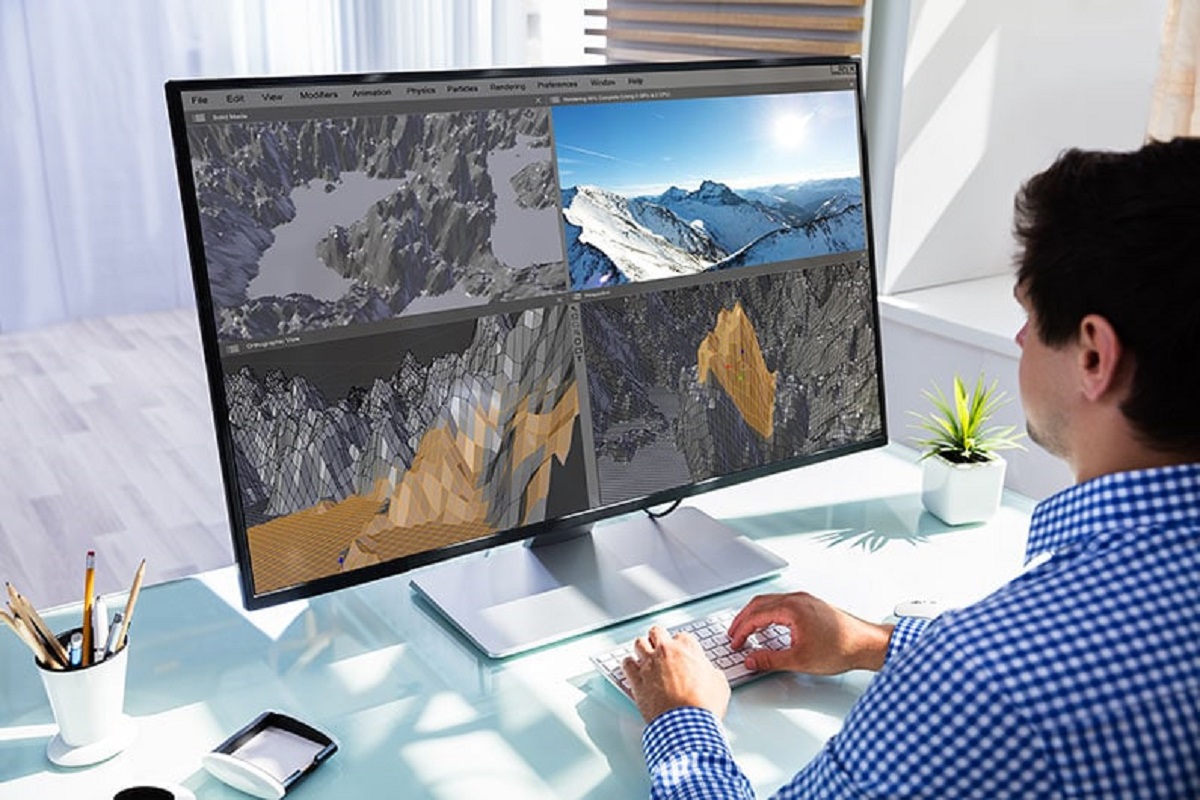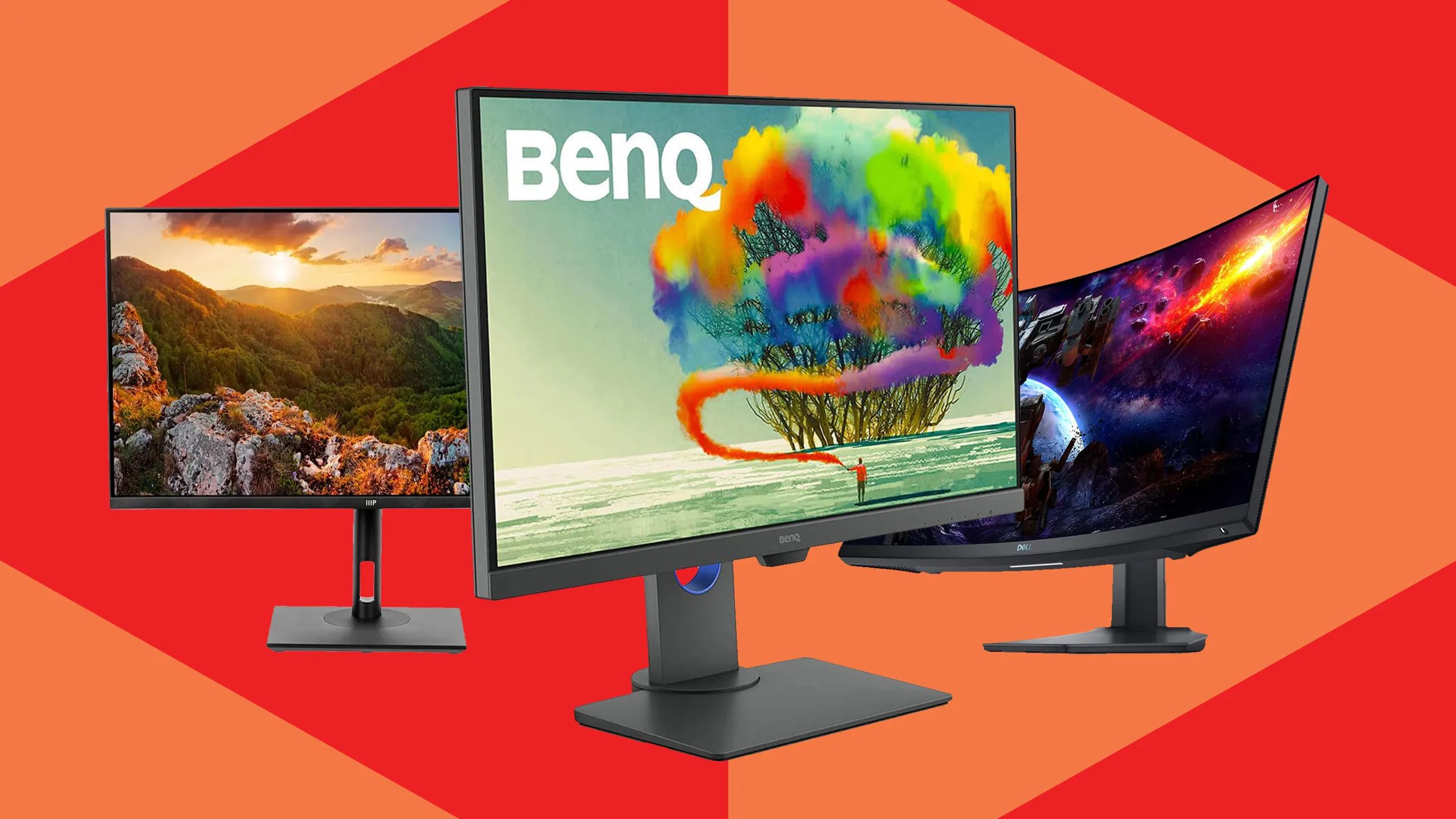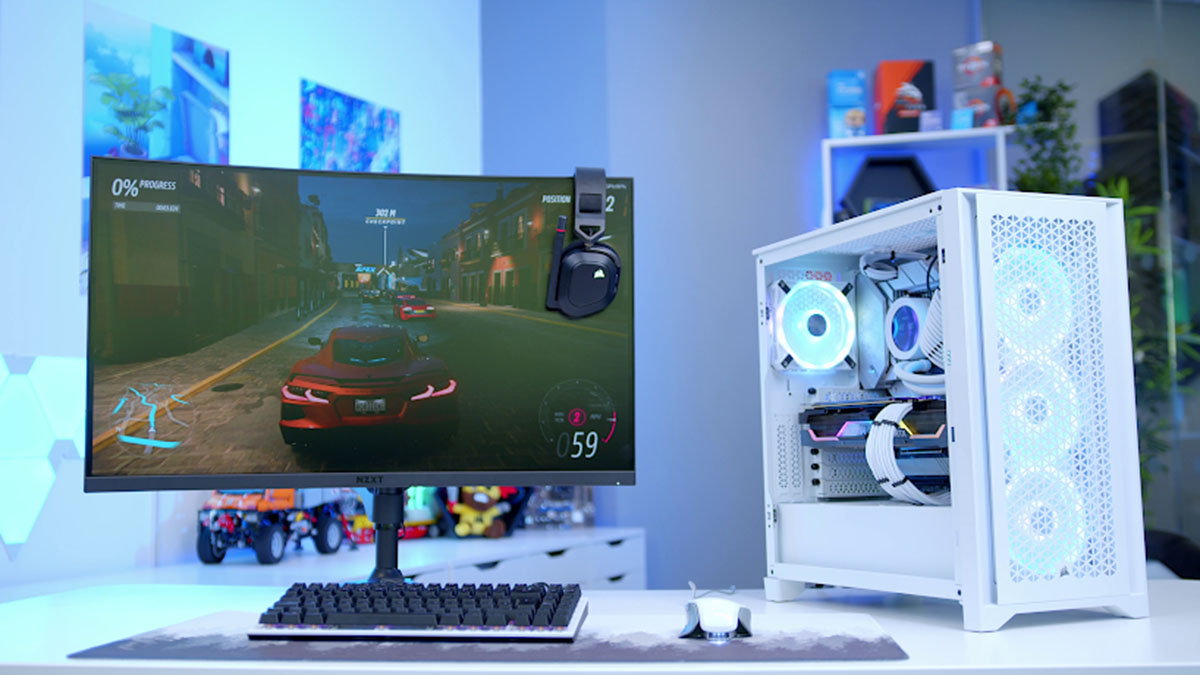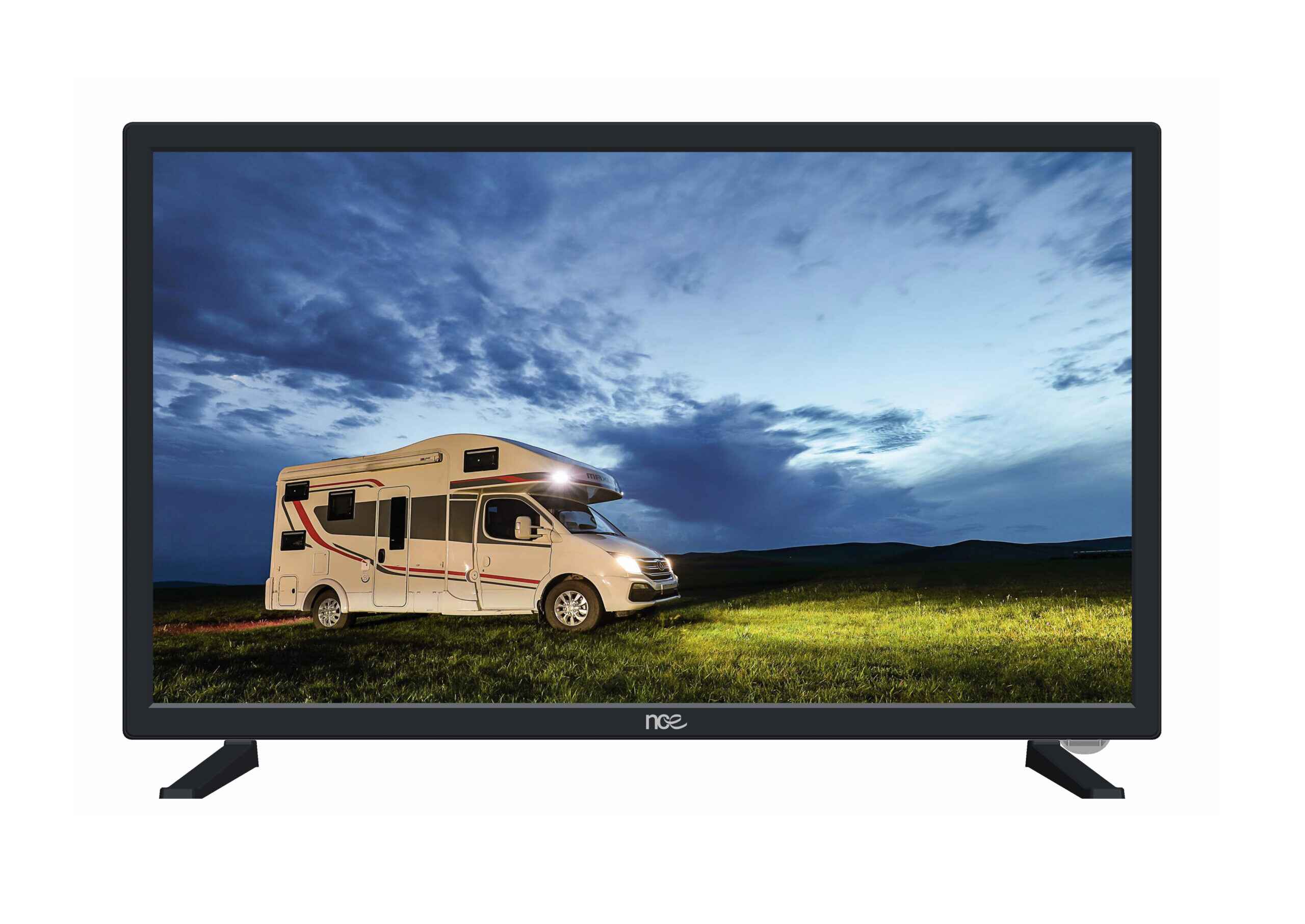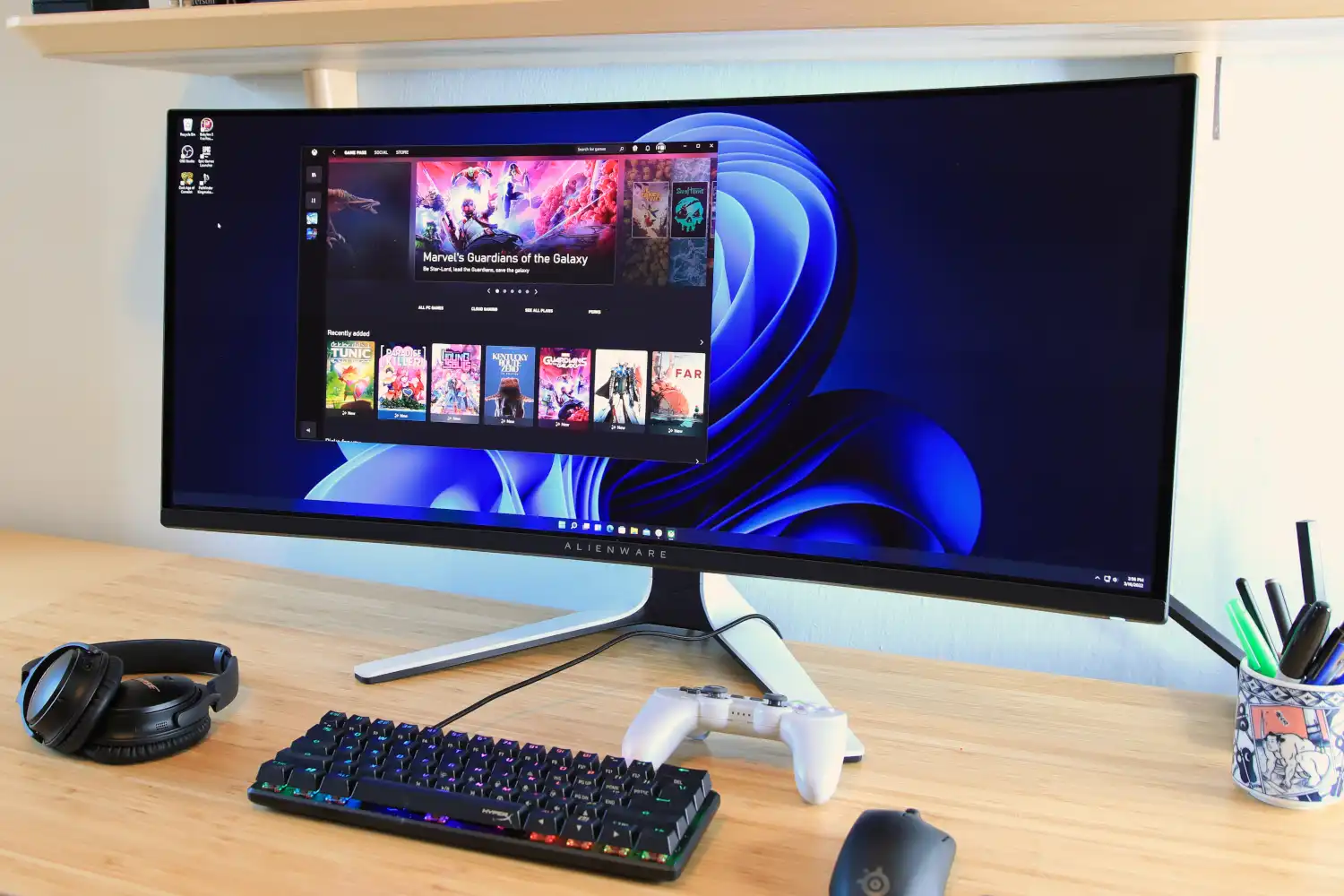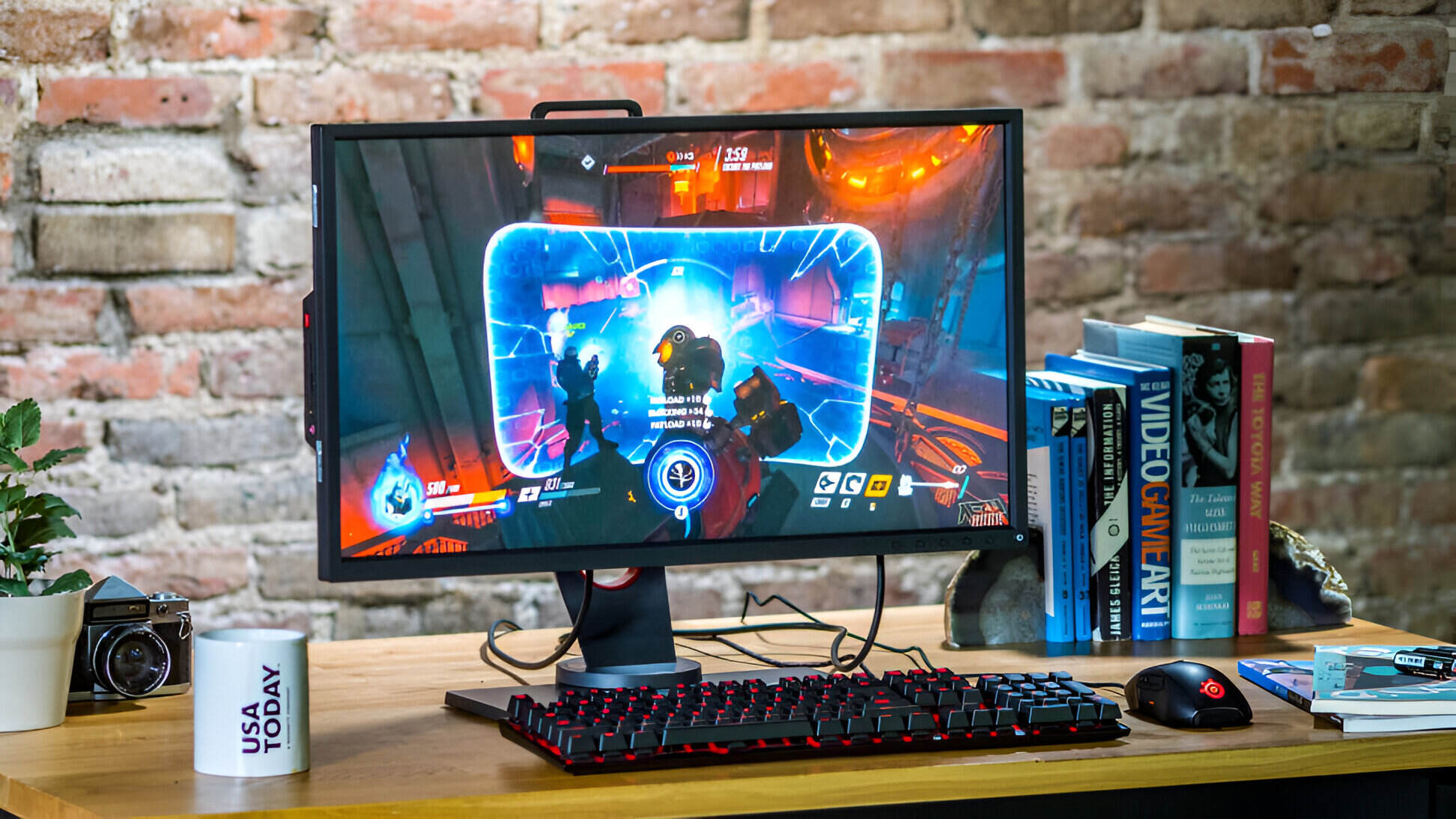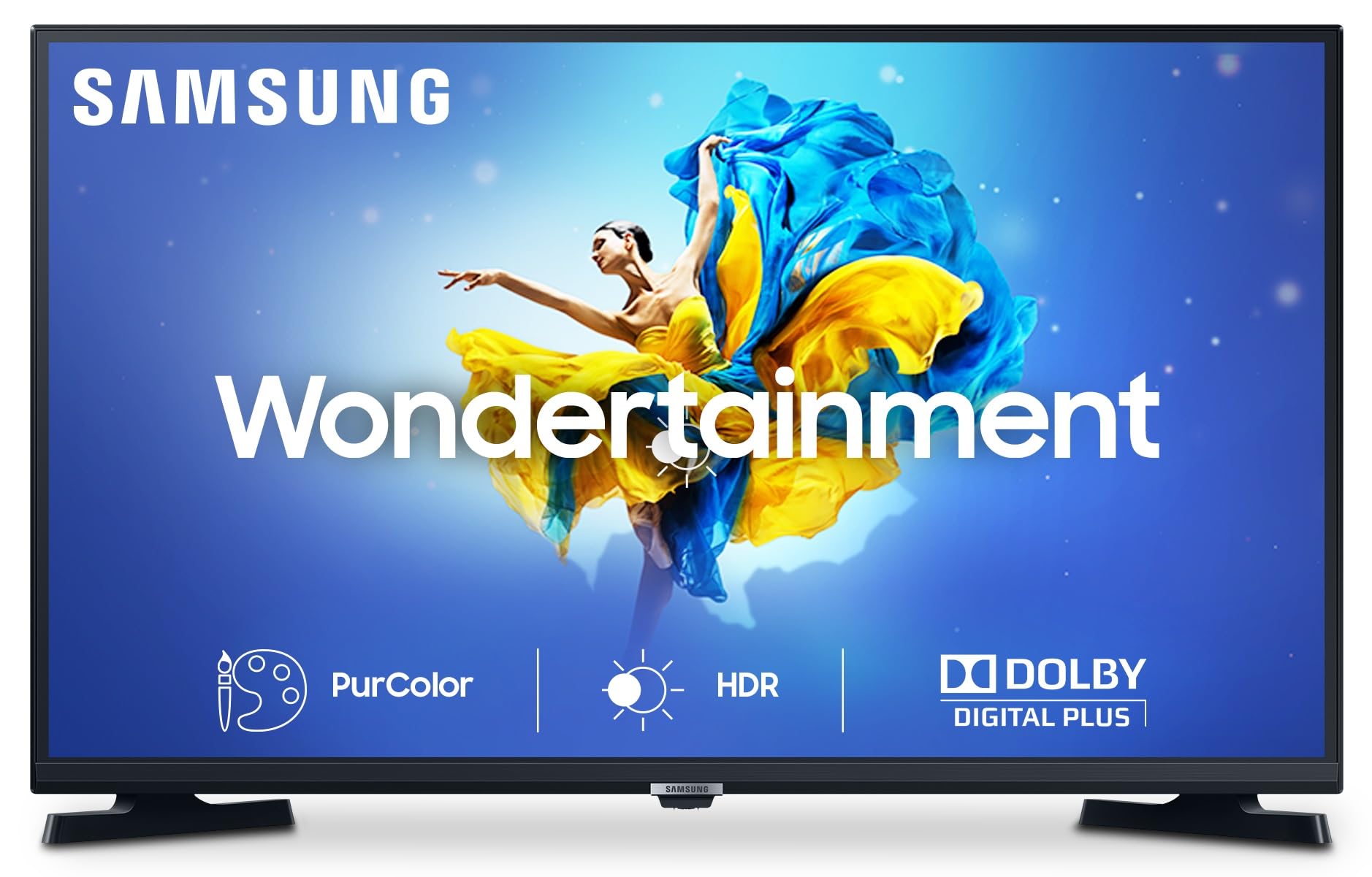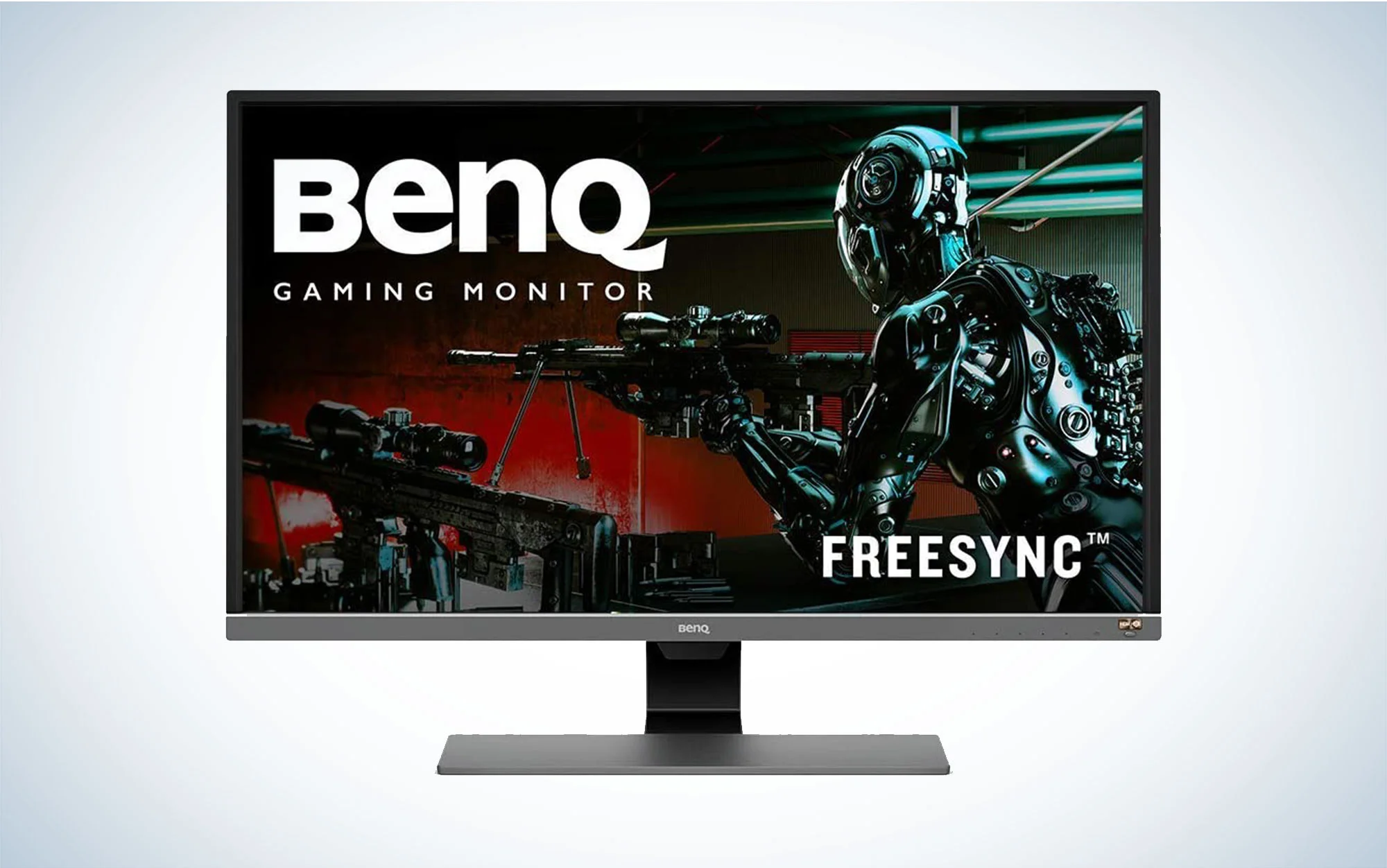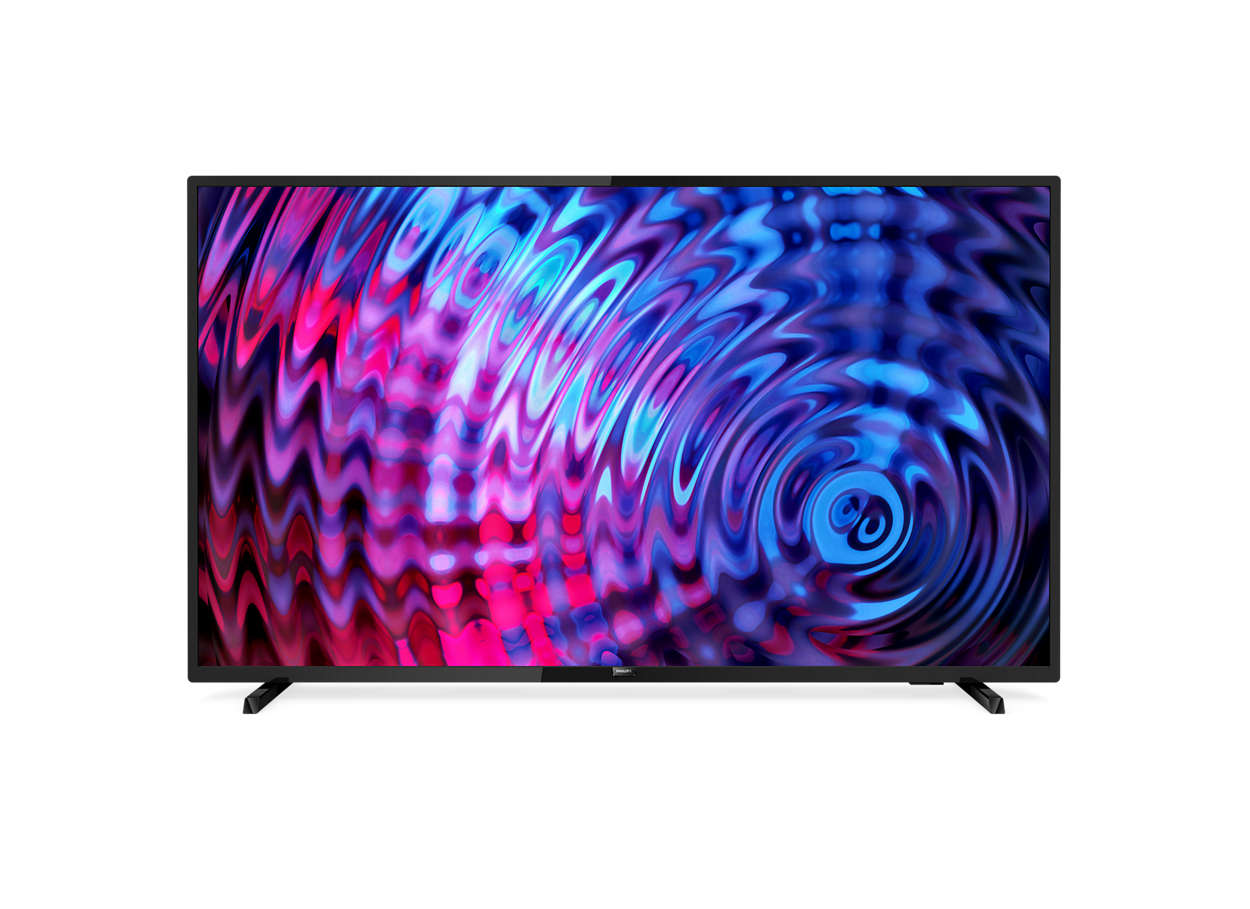Introduction
Welcome to our guide on understanding the size and dimensions of a 32 inch monitor. In today’s digital age, having a computer monitor with an optimal screen size is crucial for various tasks, such as work, entertainment, and gaming. The size of the monitor plays a significant role in determining the visual experience and productivity levels of users.
When we talk about the size of a monitor, we often refer to the diagonal measurement of the screen. This measurement is expressed in inches and provides an estimate of the total screen space available. However, it’s important to note that the actual physical dimensions of the monitor may differ depending on the aspect ratio and bezel size.
In this article, we will explore the specifics of a 32 inch monitor and help you understand its significance in the world of displays. We will discuss the physical dimensions, how it compares to other screen sizes, and the advantages and disadvantages of opting for a 32 inch monitor. By the end of this guide, you will have a clear understanding of whether a 32 inch monitor is the right choice for your needs.
Understanding Screen Size Measurement
Before delving into the specifics of a 32 inch monitor, it’s important to understand how screen sizes are measured. Screen size measurement refers to the diagonal distance between two opposite corners of the screen. This measurement is expressed in inches, with one inch equal to approximately 2.54 centimeters.
It’s worth noting that screen size measurement does not take into account the monitor’s width or height. It is a representation of the diagonal distance only. This means that two monitors with the same screen size can have different physical dimensions, depending on the aspect ratio and bezel size.
The aspect ratio of a monitor refers to the proportional relationship between the width and height of the screen. The most common aspect ratios for monitors are 16:9 and 16:10, with the former being the standard for most modern monitors. However, there are also ultrawide monitors available with aspect ratios of 21:9, offering a wider field of view suitable for immersive gaming and multimedia experiences.
The bezel of a monitor refers to the frame surrounding the screen. The size of the bezel can vary between monitors, and it can impact the overall dimensions of the display. Some monitors feature slim bezels, which create a more seamless and immersive visual experience, while others have wider bezels that may accommodate additional features or connectivity options.
Understanding screen size measurement, aspect ratio, and bezel size is crucial when comparing different monitor sizes and choosing the right display for your needs. While the screen size measurement provides a general idea of the available screen space, it’s essential to consider the aspect ratio and bezel size to accurately assess the physical dimensions and visual experience of the monitor.
What Does 32 Inch Actually Mean?
Now that we have a basic understanding of screen size measurement, let’s explore what a 32 inch monitor actually means in terms of physical dimensions. A 32 inch monitor refers to the diagonal measurement of the screen, which is approximately 32 inches or 81 centimeters.
However, it’s important to note that the actual physical dimensions of a 32 inch monitor can vary depending on the aspect ratio and bezel size. Most 32 inch monitors have an aspect ratio of 16:9, which is the standard for modern displays. This means that the width of the screen will be approximately 27.9 inches or 70.9 centimeters, while the height will be approximately 15.7 inches or 39.9 centimeters.
These dimensions provide a significant amount of screen real estate, making a 32 inch monitor suitable for a wide range of tasks. It offers ample space for multitasking, allowing you to have multiple windows or applications open simultaneously without feeling cramped. This is particularly beneficial for professionals who require a larger workspace, such as video editors, graphic designers, and data analysts.
Furthermore, a 32 inch monitor provides an immersive viewing experience, especially when used for multimedia purposes, such as watching movies, playing games, or viewing high-resolution images. The larger screen size enhances the visual impact, making the content more engaging and enjoyable.
It’s worth mentioning that while a 32 inch monitor offers significant screen real estate, it may not be suitable for everyone. Individuals with limited desk space or those who prefer a more compact setup may find a 32 inch monitor too large for their needs. It’s essential to consider your workspace and personal preferences when deciding on the appropriate size for your monitor.
In the next section, we will compare a 32 inch monitor to other screen sizes to give you a better understanding of its relative scale and dimensions.
The Physical Dimensions of a 32 Inch Monitor
When considering the physical dimensions of a 32 inch monitor, it’s important to take into account the aspect ratio and bezel size, as they can affect the overall size and dimensions of the display. Most 32 inch monitors have an aspect ratio of 16:9, which is the standard for modern monitors.
The width of a 32 inch monitor with a 16:9 aspect ratio is approximately 27.9 inches (70.9 centimeters), while the height is around 15.7 inches (39.9 centimeters). These measurements may vary slightly depending on the specific model and manufacturer.
In terms of depth, the average depth of a 32 inch monitor is around 2 to 3 inches (5.1 to 7.6 centimeters). However, it’s important to note that the depth can vary based on the design and features of the monitor. Some monitors may have a thinner profile, while others may have a slightly larger depth to accommodate additional components.
When it comes to weight, a 32 inch monitor can range anywhere from around 10 to 20 pounds (4.5 to 9 kilograms), depending on the materials used and the presence of additional features, such as built-in speakers or adjustable stands. It’s crucial to consider the weight of the monitor if you plan on mounting it to a wall or using a monitor arm for flexibility.
It’s also worth mentioning the bezel size, which refers to the frame surrounding the screen. The bezel can impact the overall dimensions of the monitor and the visual experience. Smaller bezels create a more seamless and immersive visual experience, allowing for a larger display area. Wider bezels, on the other hand, may provide additional space for connectivity options or built-in controls.
Considering the physical dimensions of a 32 inch monitor is important when planning your workspace or determining if it will fit on your current desk. It’s also essential to keep in mind any space requirements for accessories, such as keyboard, mouse, and speakers.
In the next section, we will compare the size of a 32 inch monitor to other commonly used screen sizes to help you better understand its relative scale.
How Does a 32 Inch Monitor Compare to Other Screen Sizes?
When considering the size of a monitor, it’s helpful to compare it to other commonly used screen sizes to get a better understanding of its relative scale and dimensions. Let’s take a look at how a 32 inch monitor compares to other popular screen sizes.
A 32 inch monitor provides a generous amount of screen real estate, making it suitable for various tasks. In comparison to smaller sizes, such as 24 inches or 27 inches, a 32 inch monitor offers a significantly larger display area. This means that you’ll have more room to work with, allowing you to comfortably multitask and have multiple windows or applications open simultaneously.
Compared to larger sizes, such as 34 inches or 49 inches, a 32 inch monitor is considered more moderate in size. While it may not offer the same level of immersive viewing experience as ultra-wide or super ultra-wide monitors, it still provides ample screen space for productivity and entertainment purposes.
It’s worth noting that the visual experience may also vary depending on the resolution of the monitor. Higher resolution displays, such as Quad HD (2560×1440) or 4K Ultra HD (3840×2160), on a 32 inch monitor can provide crisp and detailed images, enhancing the overall viewing experience.
Choosing the right screen size ultimately depends on your personal preferences and specific requirements. If you prefer a more compact setup or have limited desk space, a 32 inch monitor may be a suitable option. However, if you need an ultra-wide display for immersive gaming or multitasking, you may consider larger sizes.
Understanding how a 32 inch monitor compares to other screen sizes can help you make an informed decision and choose the right monitor for your needs. In the next section, we will discuss the factors you should consider when buying a 32 inch monitor.
Is a 32 Inch Monitor Suitable for You?
Now that we have explored the dimensions and compared a 32 inch monitor to other screen sizes, you may be wondering if a 32 inch monitor is suitable for your specific needs. The answer depends on a variety of factors, including your usage requirements, available desk space, and personal preferences.
A 32 inch monitor is ideal for those who require a larger workspace and more screen real estate. If you frequently work with multiple applications or need to view complex documents, spreadsheets, or creative projects simultaneously, a 32 inch monitor can greatly enhance your productivity. The additional space allows for better organization, minimizing the need to constantly switch between windows.
For gamers, a 32 inch monitor can provide a more immersive gaming experience. The larger screen size allows for better visibility and can enhance the overall enjoyment of games, particularly those with detailed graphics and expansive worlds.
However, it’s important to consider the available desk space when deciding on a 32 inch monitor. This size may not be suitable for smaller or cluttered workspaces. Before purchasing a monitor of this size, measure your desk area to ensure that it can comfortably accommodate the monitor and leave enough space for other peripherals like a keyboard and mouse.
Additionally, consider your viewing distance. For optimal viewing, it’s recommended to sit at a proper distance from the screen to avoid eye strain and maintain a comfortable viewing angle. For a 32 inch monitor, a viewing distance of approximately 3-4 feet (1-1.2 meters) is often recommended.
It’s also worth considering your own visual acuity. If you have vision issues or prefer a higher pixel density, a higher resolution monitor may be more suitable for you. A 32 inch monitor with a higher resolution, such as Quad HD or 4K Ultra HD, can provide sharper and more detailed visuals.
Ultimately, whether a 32 inch monitor is suitable for you depends on your specific needs and preferences. Consider your workspace, usage requirements, and personal comfort when making this decision. It’s also wise to read reviews and seek advice from professionals who can help you determine the optimal screen size for your unique needs.
Next, we will discuss important factors to consider when buying a 32 inch monitor.
Factors to Consider When Buying a 32 Inch Monitor
When purchasing a 32 inch monitor, there are several important factors to consider to ensure that you choose the right option for your specific needs. Here are some key factors to keep in mind:
Resolution: The resolution of the monitor determines the level of detail and clarity in the displayed content. Consider whether you need a standard Full HD (1920×1080) resolution or if you prefer a higher resolution such as Quad HD (2560×1440) or 4K Ultra HD (3840×2160) for sharper visuals.
Panel Type: Different panel types, such as IPS, TN, and VA, offer varying viewing angles, color accuracy, and response times. Consider your usage requirements to determine the most suitable panel type for your needs.
Refresh Rate: The refresh rate indicates how many times the screen can refresh per second. Higher refresh rates, such as 75Hz or 144Hz, can provide smoother motion, making them ideal for gaming or fast-paced multimedia content.
Connectivity: Consider the available connectivity options on the monitor, such as HDMI, DisplayPort, and USB ports. Ensure that the monitor provides the necessary ports for your devices and peripherals.
Ergonomics: Check for adjustable features like tilt, height, and swivel options, which can enhance comfort and provide flexibility in positioning the monitor according to your preferences.
Color Accuracy: If color accuracy is crucial for your work or hobby, consider a monitor with a high color gamut coverage, such as 100% sRGB or Adobe RGB, to reproduce colors accurately.
Additional Features: Consider any additional features that may be important to you, such as built-in speakers, USB hubs, or blue light filters to reduce eye strain.
Budget: Determine your budget for purchasing a monitor and look for options that fit within your price range. Consider the value for money offered by different models based on their features and performance.
Taking all these factors into consideration will help you make an informed decision when buying a 32 inch monitor that meets your specific requirements and preferences.
Now that we have discussed the factors to consider when purchasing a 32 inch monitor, let’s summarize the advantages and disadvantages of opting for this screen size in the next section.
Advantages and Disadvantages of a 32 Inch Monitor
Before making a purchase decision, it’s essential to weigh the advantages and disadvantages of opting for a 32 inch monitor. Here are some key advantages and disadvantages to consider:
Advantages:
- Amply-sized Display: The larger screen size of a 32 inch monitor provides ample space for multitasking and working with multiple applications simultaneously.
- Improved Productivity: The increased screen real estate allows for better organization and enhanced productivity, especially for tasks that require a larger workspace.
- Immersive Viewing Experience: The larger screen size enhances the viewing experience, making it ideal for gaming, watching movies, and viewing high-resolution images.
- Greater Detail and Clarity: Opting for a higher resolution display on a 32 inch monitor can provide sharper and more detailed visuals.
- Comfortable Viewing: With a larger screen size, you can comfortably view content from a distance, reducing eye strain and providing a wider viewing angle.
Disadvantages:
- Space Requirements: Consider the available desk space as a 32 inch monitor may be too large for compact workspaces or cluttered setups.
- Higher Cost: Compared to smaller-sized monitors, 32 inch monitors tend to have a higher price tag, especially if they feature higher resolutions or advanced features.
- Restricted Mobility: Due to their larger size and weight, 32 inch monitors may lack portability and can be challenging to move around or transport.
- Potential Scaling Issues: Some software applications or websites may not be properly optimized for larger screen sizes, possibly resulting in scaling issues or UI elements appearing too small.
Considering these advantages and disadvantages will help you evaluate whether a 32 inch monitor is the right choice for your specific needs and circumstances.
In the next section, we will conclude our guide and summarize the key points discussed throughout the article.
Conclusion
Choosing the right monitor size is an important decision that can greatly impact your overall computing experience. In this guide, we have explored the size and dimensions of a 32 inch monitor to help you determine if it is suitable for your needs.
We started by understanding screen size measurement and how the diagonal size of a monitor is determined. We then delved into what a 32 inch monitor actually means in terms of physical dimensions, including the width, height, and weight considerations.
We compared a 32 inch monitor to other popular screen sizes, highlighting its advantages and providing a sense of scale. We discussed the suitability of a 32 inch monitor based on factors such as available desk space, viewing distance, and visual acuity.
Furthermore, we outlined important factors to consider when buying a 32 inch monitor, including resolution, panel type, refresh rate, connectivity, ergonomics, color accuracy, and budget.
Finally, we examined the advantages and disadvantages of opting for a 32 inch monitor. While it offers ample screen real estate, improved productivity, and an immersive viewing experience, it may also have space limitations, higher cost, and potential scaling issues.
Ultimately, the decision to purchase a 32 inch monitor depends on your specific needs, workspace constraints, and personal preferences. Consider the information provided in this guide to make an informed decision that will enhance your computing experience.
We hope this guide has been helpful in your journey to understanding the size and dimensions of a 32 inch monitor. With this knowledge, you can make a well-informed decision and choose the right monitor that best suits your requirements.







